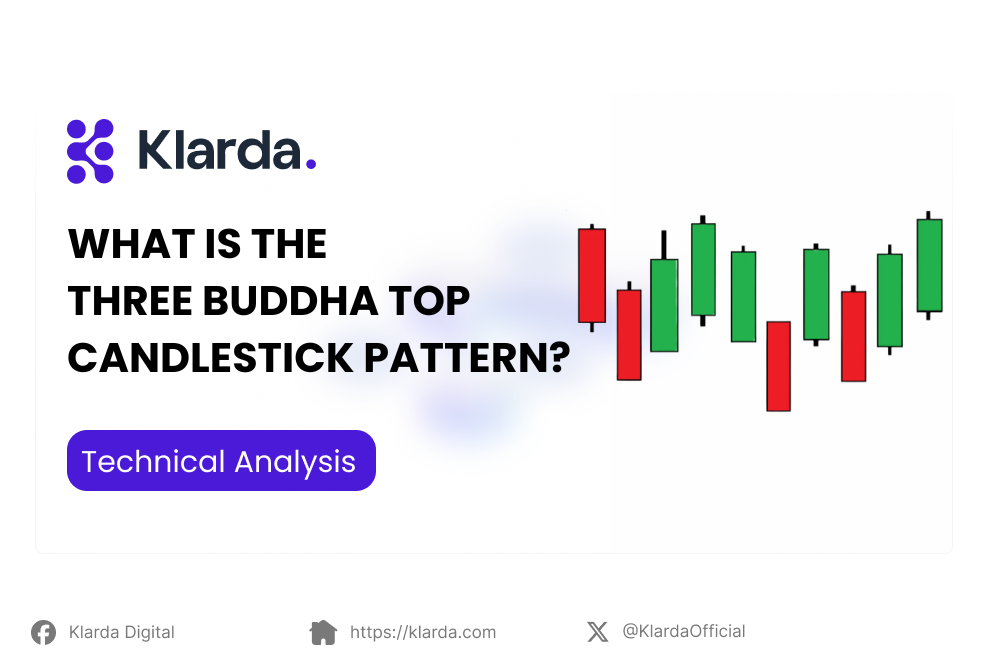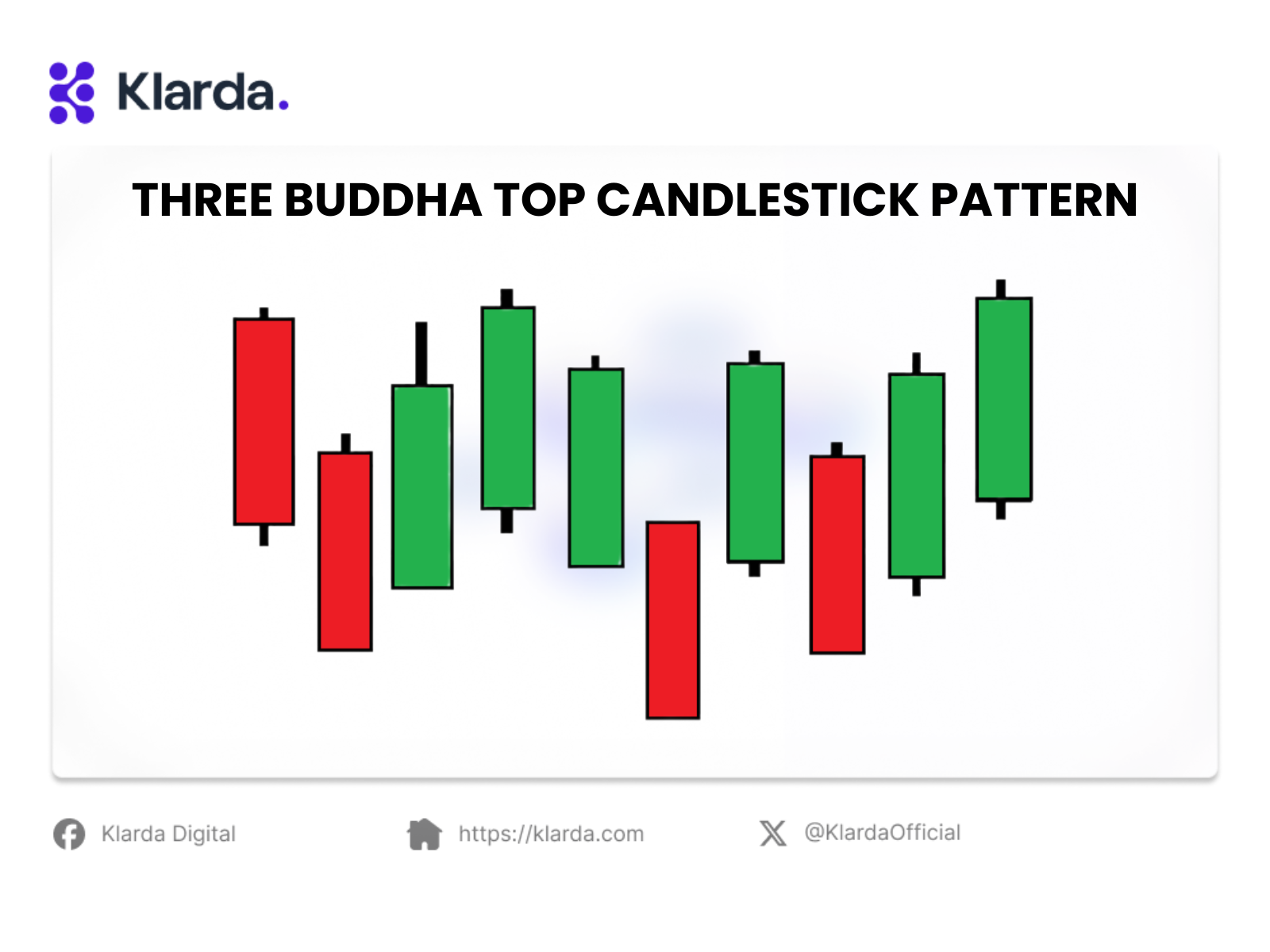What Is The Three Buddha Top Candlestick Pattern? How Does It Work?
The Three Buddha Top is a rare and complex reversal pattern, and we'll clarify it further in this article.
The Three Buddha Top candlestick pattern is a rare and somewhat elusive reversal model that can be challenging for many to grasp. Due to its complexity and the subtle nuances involved, it often seems ambiguous to traders. In this article, we aim to provide a comprehensive explanation to help you gain a clearer understanding of this pattern and how it can be effectively applied in your trading strategy.

KEY TAKEAWAY
- The Three Buddha Top, a variation of the Three Mountains pattern, signals weakening buying strength and a potential downward reversal after multiple resistance tests.
- The Three Buddha Top Candlestick Pattern, with a higher middle peak among three, signals weakening buying pressure and increasing selling momentum, often warning of a potential bearish reversal after an uptrend.
- When the asset price drops below support, traders may sell short or close positions. Confirmation comes with increased volume, and the downside target is estimated by subtracting the pattern's height from the breakout point, with additional indicators enhancing the signal.
- The Three Buddha Top provides a clear bearish reversal signal with distinct visual clarity and market sentiment insight but can produce false signals, is less common, and requires confirmation from additional indicators.
WHAT IS THE THREE BUDDHA TOP CANDLESTICK PATTERN?
The "Three Buddha Top" is a technical analysis chart pattern that acts as a variation of the Three Mountains formation. Unlike the Three Mountains, where all three peaks are of equal height, the Three Buddha Top features a central peak that is higher than the other two, forming an inverted triangle shape. This pattern signifies that the market has tested resistance three times, with the higher middle peak indicating a potential weakening in buying strength and a shift towards bearish sentiment.
FEATURES OF THREE BUDDHA TOP CANDLESTICK PATTERN
The Three Buddha Top Candlestick Pattern features three peaks on a price chart, with the middle peak being the highest, forming an inverted triangle shape. This pattern shows that the market has tested resistance three times, with the elevated middle peak indicating a decline in buying pressure and a potential increase in selling momentum.

Typically seen after a strong uptrend, it signals a potential bearish reversal, with increased selling volume or other indicators enhancing its reliability.
HOW TO TRADE WITH THREE BUDDHA TOP CANDLESTICK PATTERN?
When the price drops below the support level, traders may short or exit long positions, signaling a complete pattern and a potential decline.
Traders should watch for increased volume as the price breaches support, which confirms the pattern and signals strong selling interest. If volume does not rise, indicating that the price is not falling as expected or even rallying, the pattern may be less reliable.
The downside target for this pattern is calculated by subtracting the pattern's height from the breakout point. This target is an estimate, and the price might fall significantly below or not reach this level.
Additionally, traders can utilize other technical indicators to validate the bearish signal. For instance, a bearish MACD crossover after the third peak or a decline in RSI from overbought conditions can further validate the expected price drop.
PROS AND CONS THREE BUDDHA TOP CANDLESTICK PATTERN
Pros
- Clear Reversal Signal: The Three Buddha Top is a strong bearish reversal pattern that helps traders anticipate a potential end to an uptrend and the beginning of a downtrend.
- Visual Clarity: The distinct middle peak, higher than the other two, makes the pattern easier to identify, especially after a strong upward movement.
- Market Sentiment Insight: The pattern reflects a weakening of buying momentum and increasing selling pressure, providing valuable information about the shift in market sentiment.
Cons
- False Signals: Like any pattern, the Three Buddha Top can produce false signals, particularly if not confirmed by other indicators or if market conditions change unexpectedly.
- Less Common: This pattern is not as commonly observed as others, which might make it less familiar and harder to recognize for some traders.
- Requires Confirmation: To improve accuracy, the pattern often needs confirmation from additional indicators, such as volume increase or a bearish crossover, which can complicate trading decisions.
That's all on the Three Buddha Top candlestick pattern. We hope this helps you understand this rare formation. For newcomers seeking accurate, timely information, we recommend the Klarda app with its outstanding features.
Updated 7 months ago